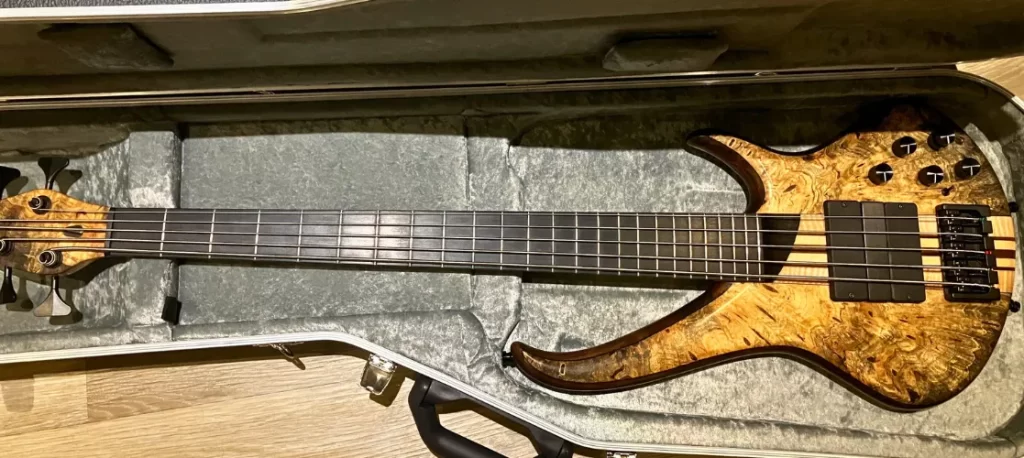March 6, 2024
Howard
There’s a lot of bass pickups out there and a lot to consider depending on many factors. Here’s a quick step by step plan to take when considering getting new pickups:
Summary
- Not every pickup will fit into every bass type, so you need to research the pickup size for your specific bass model. The placement of these pickups will have just as an effect on the tone as the pickups themselves.
- You need to then consider what sound you want to go for. Research manufacturer sound files and basses demonstrating the pickups. You can then use your ears to see what you prefer.
- Active or passive pickups?
- Then consider the coil type (double coil/single coil/split coil)
- Then consider the wiring configuration (series/parallel)
Lets dive into each of these areas in a bit more detail!
What is A Pickup?
The pickups are those black rectangular parts on the body that ‘pick up’ the notes you play transforming it into an electrical signal. More specifically, a pickup consists of magnets and coils of wire. The magnets create a magnetic field that extends above the strings. When the strings, which are typically made of a ferromagnetic material (like steel), vibrate within this magnetic field, they disrupt it. These disruptions or changes in the magnetic field induce an electrical current in the coil of wire, following Faraday’s law of electromagnetic induction.
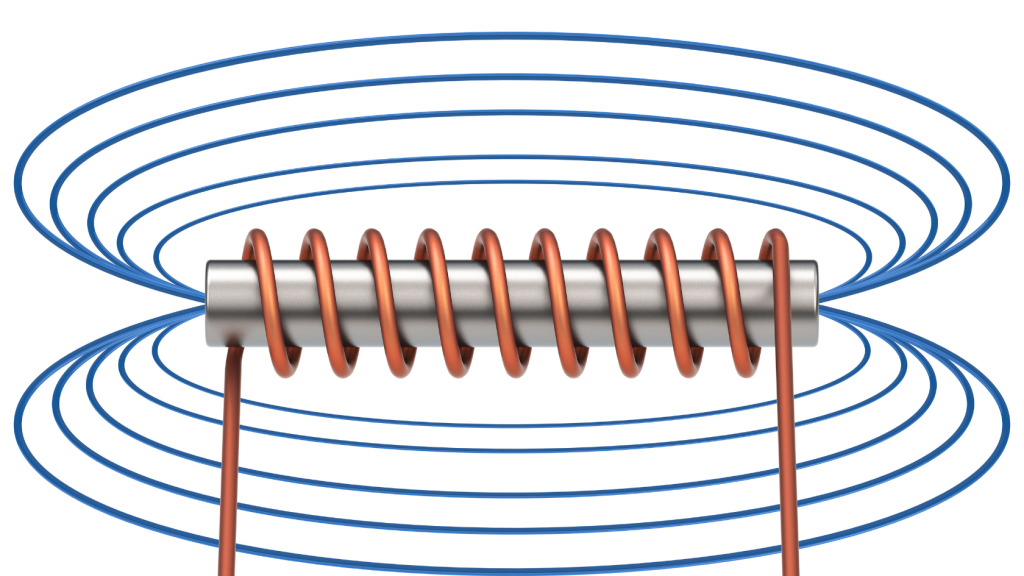
Bass Guitar Pickups Sizes
There are a number of different models of bass, which all have differently sized pickup cavities within them:
Precision Bass (P-Bass) Pickups
The Precision Bass pickup, introduced by Fender in the early 1950s, has a split-coil design that creates a humbucking effect, reducing noise and hum. The P-Bass pickup is characterised by its deep, warm, and punchy tone, making it a favourite among rock and pop players. The standard size for a Precision Bass pickup is approximately 2.25 inches (57.15mm) in width and 1.1 inches (27.94mm) in depth, though these dimensions can vary slightly depending on the manufacturer and specific model.
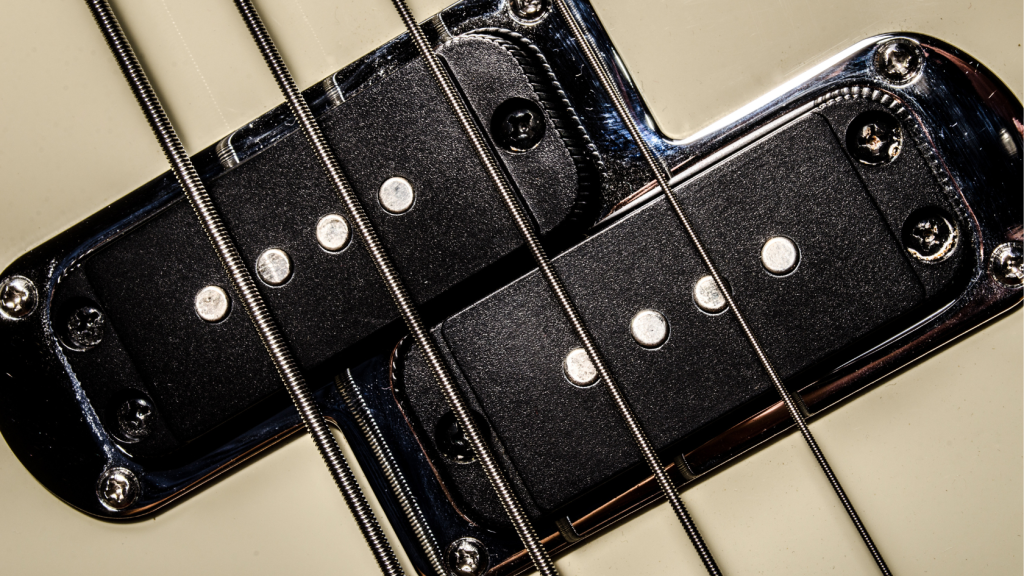
Jazz Bass (J-Bass) Pickups
Jazz Bass pickups, also introduced by Fender, feature a single-coil design and are known for their bright, clear, and articulate sound, which is versatile enough to suit a wide range of musical styles. J-Bass pickups are typically narrower and longer than P-Bass pickups. The standard size for a Jazz Bass bridge pickup is about 3.73 inches (94.74mm) in length and 0.73 inches (18.54mm) in width. The neck pickup is slightly shorter, measuring around 3.6 inches (91.44mm) in length due to the tapering of the bass body towards the neck.
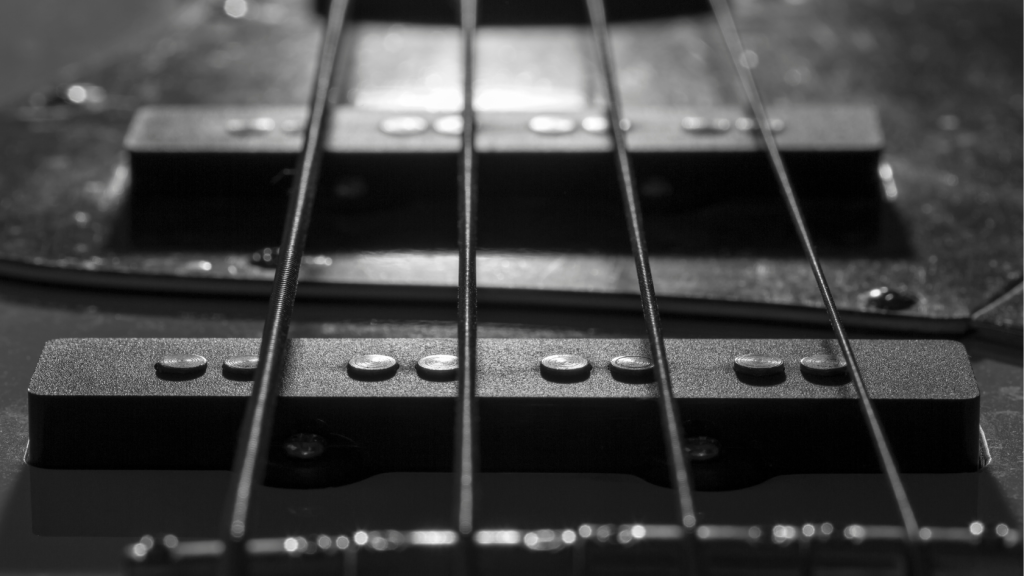
Soapbar Pickups
Soapbar pickups are so named because their shape resembles a bar of soap. These pickups can come in a variety of sizes and are not specific to one type of bass guitar. Soapbar pickups are often used for their versatility and can house either single-coil or humbucking configurations. Two common sizes for soapbar pickups are the EMG 35 and 40 series, which are popular choices among bass manufacturers. The EMG 35 series typically measures approximately 1.5 inches (38.1mm) in width and 3.5 inches (88.9mm) in length, while the EMG 40 series is slightly larger, with dimensions around 1.5 inches (38.1mm) in width and 4 inches (101.6mm) in length. It’s worth noting that the term “soapbar” can refer to a wide range of sizes beyond just these two, so it’s important to check the specific dimensions when replacing or upgrading pickups.
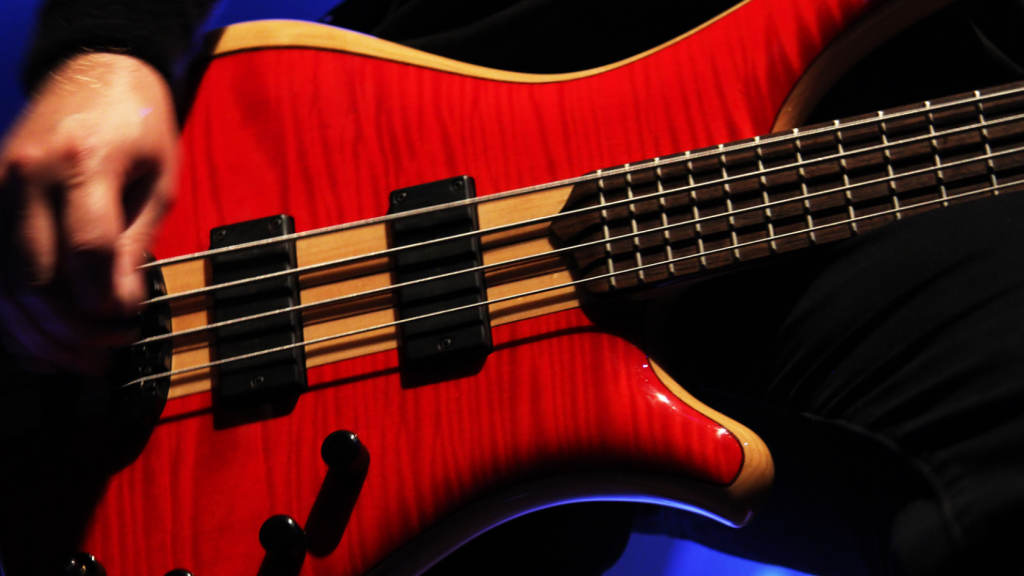
Tips to Choose the Perfect Bass Pickup
Picking the perfect bass pickup isn’t merely about choosing the most expensive or advertised.
Assessing Your Musical Needs
First and foremost, consider the genres you predominantly play. Are you into jazz, rock, or perhaps funk? Each style may gravitate towards specific pickups. For instance:
- Jazz enthusiasts might favour Jazz pickups for their smooth and articulate tones.
- Hard rock players could lean towards Humbuckers for a thicker, meatier output.
Evaluating Your Bass Guitar’s Build
The construction of your bass guitar plays a crucial role:
- The wood type can impact the tonal quality, affecting how a pickup will sound.
- Some pickups may not fit all bass body types, so compatibility is critical.
Balancing Budget with Brand Prestige
While renowned brands often guarantee quality, it doesn’t imply that lesser-known names can’t deliver:
- Set a realistic budget and look for pickups that offer the best value within that range.
- Sometimes, lesser-known brands offer a gem at a fraction of the price.
Active Vs. Passive Pickups:
A core decision for any bassist is between active and passive pickups. Each brings its strengths to the table, and understanding them is pivotal for achieving your desired sound.
Understanding Active Pickups: Power-Packed Performance
Active pickups come with a built-in preamp, powered typically by a 9V battery. Their highlights include:
- Higher output, ensuring a louder and more precise signal.
- Boosted frequencies, allowing for versatile tone shaping.

The Traditional Charm of Passive Pickups
Steeped in history, passive pickups have been the backbone of countless classic tracks. They are loved for:
- Their natural, organic sound.
- Simplicity in design, relying on the instrument’s natural resonance.
Bass Pickup Coil Types
Beyond the models lie the overarching types, each bringing distinct characteristics to the table.
Single-Coil: The Classic Resonance
At the heart of many iconic tracks, single-coil pickups are known for their bright, clear sound. However, they can sometimes be susceptible to interference and hum.
Humbuckers/Double-Coil: Cancel the Hum
Developed as an antidote to the hum of single coils, humbuckers use two loops to negate noise interference, resulting in a thicker, warmer sound that many love.
Split-Coil: A Fusion of Dynamics
Marrying the attributes of single and double coils, split coils offer a balanced sound. Often found on Precision Basses, they deliver both punch and clarity.
Piezo Pickups: Precision and Clarity
Mounted in the bridge, piezos capture the vibrations of the strings and the body, producing an accurate and transparent sound. It’s ideal for bassists chasing an acoustic tone.
Optical Pickups: The Modern Approach
Harnessing the power of light, these pickups are free from electromagnetic interference. They offer a clear, dynamic sound with a futuristic edge.
Single-Coil Format Humbuckers: Best of Both Worlds
Combining single-coil design with the noise-cancelling benefits of humbuckers, these pickups provide a versatile tonal range suitable for diverse musical genres.
Multi-coil configurations
Many dual coil pickups actually offer wiring configurations allowing you to toggle the coiling configurations. A toggle switch can be put in so you can split coil the pickups on the fly, offering improved versatility. I’m currently getting a custom-made bass where I’m getting a dual coil pickup at the bridge to compensate for the naturally thin tone at that position, and the option to single coil the neck pickup to help bring a bit more clarity and maintain note definition.

Wiring Configurations: Series or Parallel?
When discussing bass guitar pickups, the wiring configurations play a crucial role in shaping the instrument’s tone. The three main types of wiring configurations are series, parallel, and single (coil). Each configuration has its unique characteristics and impact on the sound produced. Let’s delve into each:
Series Wiring
In series wiring, two pickups are wired one after the other, forming a longer path for the signal to travel. This configuration boosts the output because the resistance of the circuit is increased, resulting in a stronger signal. The tone produced in series wiring is typically warmer, thicker, and more powerful, with an emphasis on lower frequencies. This makes it a popular choice for styles of music that require a fuller, richer sound, such as rock or metal.
Parallel Wiring
Parallel wiring involves connecting two pickups side by side, with each having its path to the output. In this configuration, the overall resistance is lower than that of either pickup alone, which tends to produce a cleaner, brighter, and somewhat quieter sound compared to series wiring. Parallel wiring retains more high-frequency content, resulting in a crisp tone that is often preferred for styles of music that require clarity and articulation, such as funk or jazz.
Supplementary Resources
When you’re on the hunt for the perfect bass gear, knowledge is power. Arm yourself with the correct information, and you can make choices that resonate with your sound aspirations.
Contacts and Networks for Bassists
Building connections isn’t merely about networking; it’s about being part of a vibrant, supportive community that shares your passion.
Joining Bassist Forums and Communities
Online forums are treasure troves of shared experiences and advice:
- Sites like TalkBass and BassChat are hubs for bassists to discuss gear, techniques, and more.
- Participate actively to gain insights and offer your own experiences.
Engaging with Manufacturers for Queries and Support
Direct interactions can clarify doubts and enhance product knowledge:
- Many manufacturers have dedicated support lines and email channels.
- Feel free to ask questions about compatibility, installation, or general advice.
Noteworthy Bass Pickup Innovations
The world of bass pickups has seen many changes over the years. As technologies advance and musicians seek new sonic territories, manufacturers have risen to the challenge, delivering groundbreaking designs that cater to the modern player while respecting tradition.
Emerging Technologies in Pickup Design
The quest for the perfect tone has led to innovative technologies in pickup design:
- Nano-coil technology: Enhances frequency range without compromising on size or shape.
Signature Series Worth Every Penny
There’s often a reason why certain signature series pickups carry a premium tag:
- Artists’ specifications: Tailored to achieve the tonal preferences of legendary bassists.
- Limited editions: Often made with meticulous craftsmanship, offering unique aesthetics and performance.
Conclusion
Overall, you should now have a much clearer idea of bass guitar pickups. If in doubt, reach out to a music store, the instrument manufacturer or a helpful online forum!

Howard Head
I turn confused bass enthusiasts into bass gods through a simple and logical process.



